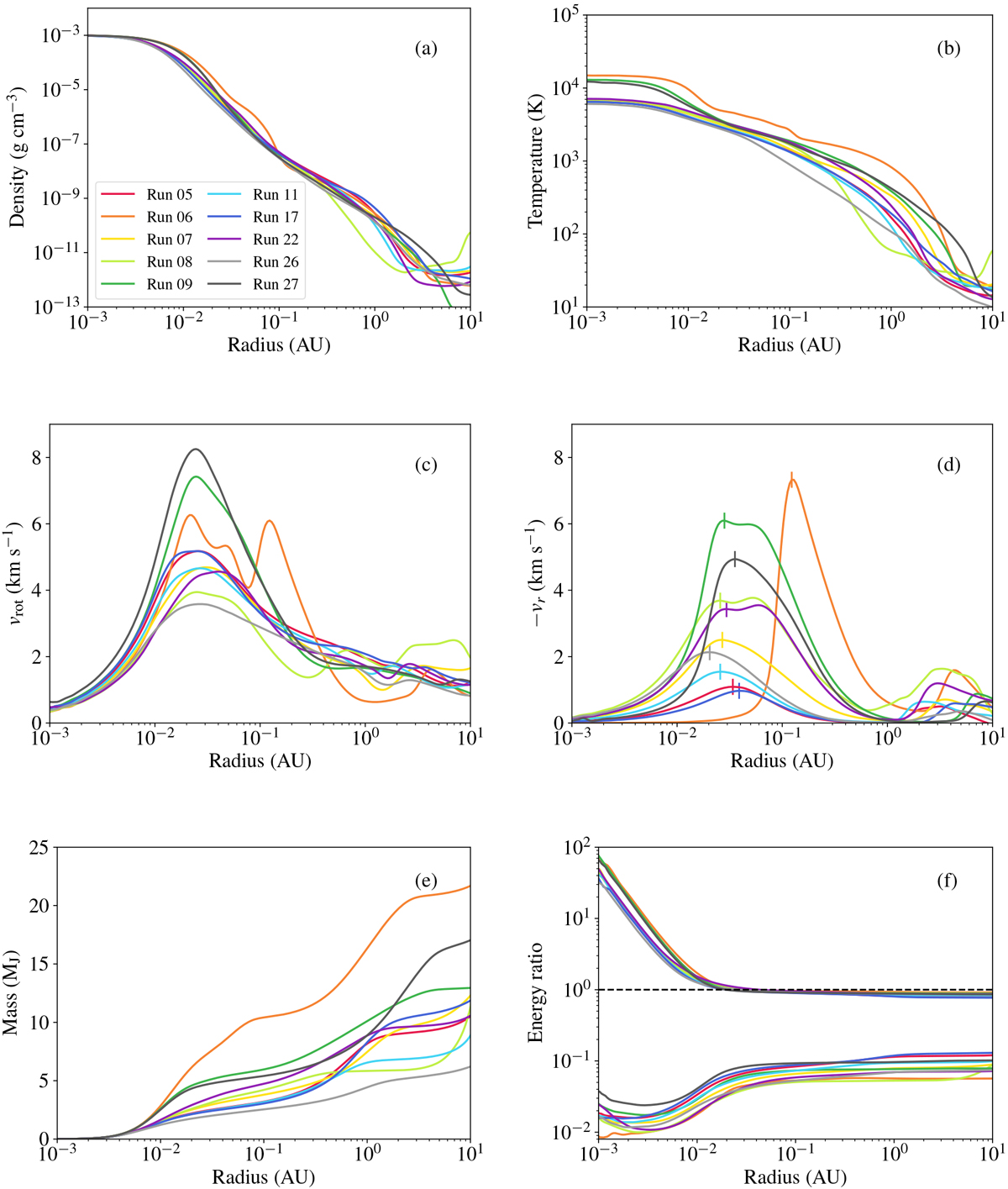Fig. A.4

Properties of Type Ia protoplanets, that is, fragments which have undergone second collapse and attained a central density of 10−3g cm−3. Panels a and b: spherically-averaged density and temperature, respectively. They do not vary significantly from protoplanet to protoplanet, though the protoplanets in runs 6, 9 and 27 posses denser and hotter central regions due to their higher mass. Panels c and d: rotational (azimuthally-averaged) and infall velocity (spherically-averaged), the former of which is significant as the protoplanets reside in a rotating disc. The peaks in infall velocity are indicative boundaries where gas begins to decelerate. The second core boundaries are at R = 10−2−10−1 AU and the first core boundaries at R = 1−10 AU. Panel e: mass of the protoplanet within a given radius, demonstrating that even in low mass discs, the mass of formed objects is of the order of a few Mj or higher. Panel f: ratio of energies interior to a given radius: Ether∕Egrav (top set of lines) and Erot∕Egrav (bottom set of lines). Rotational energy is generally much lower than the gravitational energy. The short vertical lines in (d) indicate the positions of the second cores.
Current usage metrics show cumulative count of Article Views (full-text article views including HTML views, PDF and ePub downloads, according to the available data) and Abstracts Views on Vision4Press platform.
Data correspond to usage on the plateform after 2015. The current usage metrics is available 48-96 hours after online publication and is updated daily on week days.
Initial download of the metrics may take a while.


